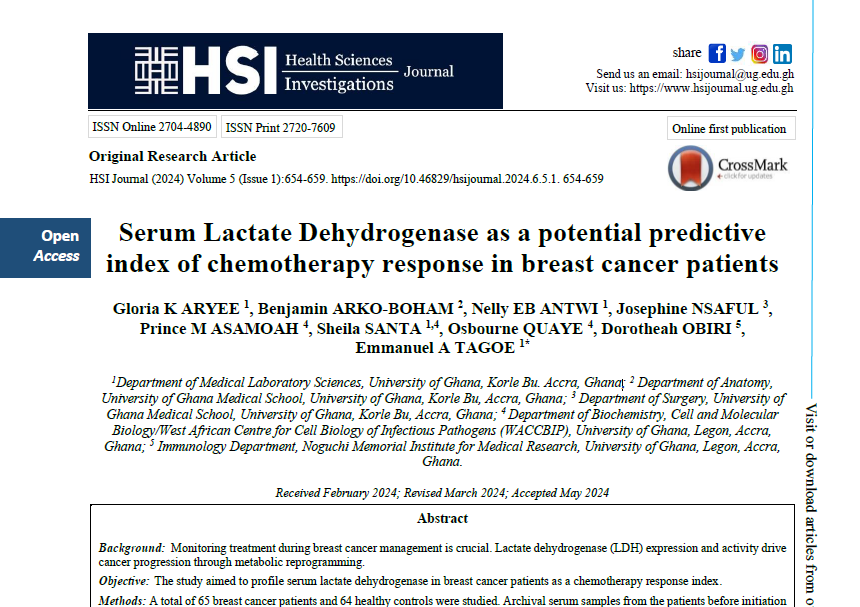Serum Lactate Dehydrogenase as a Potential Predictive Index of Chemotherapy Response in Breast Cancer Patients
Serum Lactate Dehydrogenase as a potential predictive index of chemotherapy response
Abstract
Background: Monitoring treatment during breast cancer management is crucial. Lactate dehydrogenase (LDH) expression and activity drive cancer progression through metabolic reprogramming.
Objective: The study aimed to profile serum lactate dehydrogenase in breast cancer patients as a chemotherapy response index.
Methods: A total of 65 breast cancer patients and 64 healthy controls were studied. Archival serum samples from the patients before initiation and after the third cycle of chemotherapy and controls were retrieved from -80 oC freezer. Clinico-pathological data of study participants were retrieved. Total RNA was extracted from the serum using a commercial kit, and lactate dehydrogenase A mRNA was quantified by RT-qPCR.
The serum total LDH activity was determined using a chemistry autoanalyser.
Results: The mean age difference between patients (49.55, SD 11.98) and controls (55.67, SD 13.99) years was statistically significant (p < 0.01). However, the BMI and waist-to-hip ratio of patients compared to the controls were not statistically significant (p > 0.05). Patients with tumour grade 3 (52.3%), HER 2 positive (30.8%) and stage 3 (46.2%) were over-presented. Serum total LDH activity was significantly elevated in the patients at baseline compared to the controls (p < 0.01) but not significant when the activity was compared with after the third cycle of chemotherapy (p > 0.05). The pattern remained unchanged when serum LDHA mRNA relative fold change was compared (p > 0.05).
Nevertheless, the fold change ratio difference for mRNA (3.4) was higher than that of enzyme activity (0.24).
Conclusion: Serum total LDH activity and LDHA expression in breast cancer patients were reduced after the third cycle of chemotherapy.
However, LHDA mRNA expression could be a better predictive index of chemotherapy response than enzyme activity.


